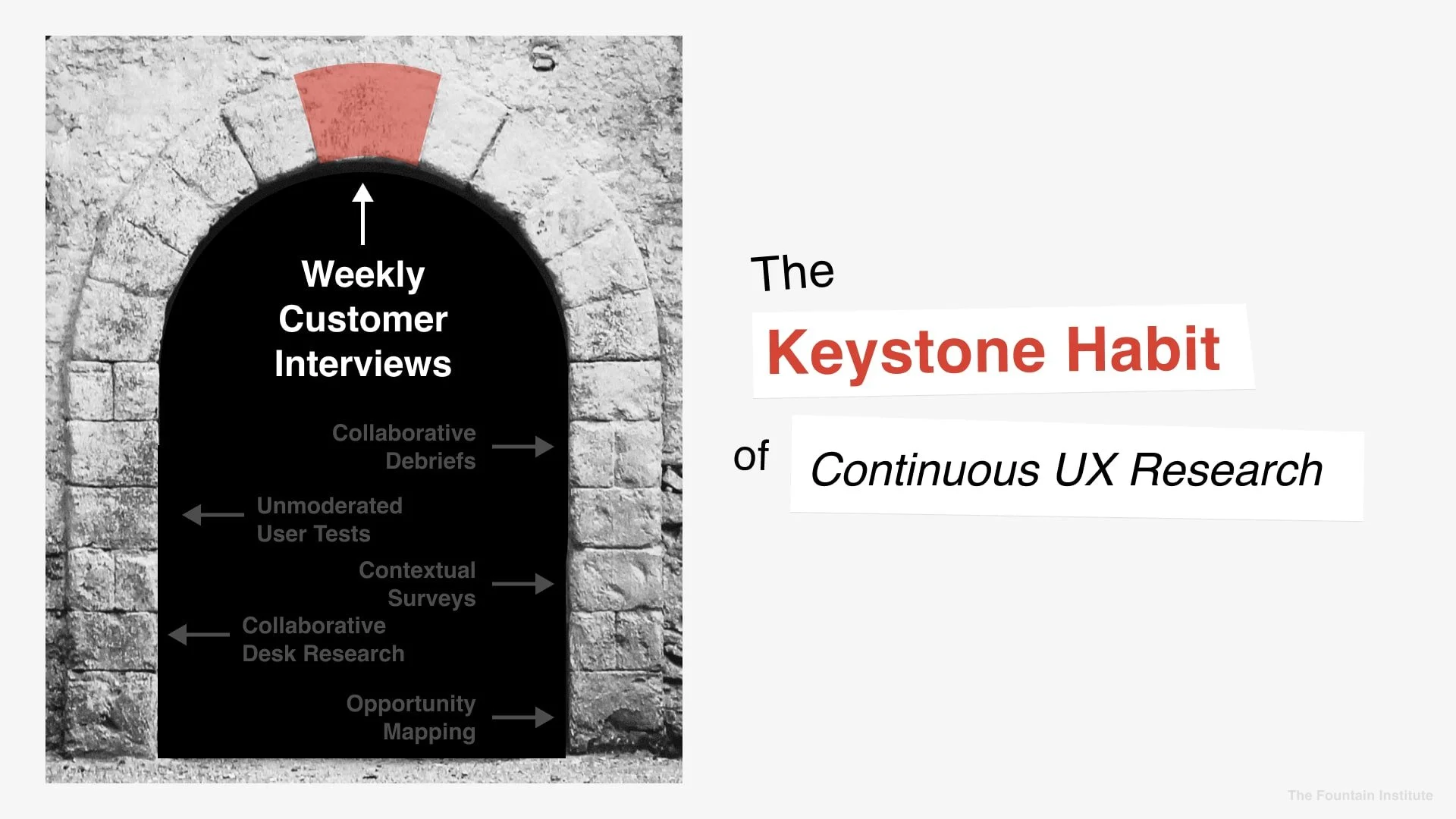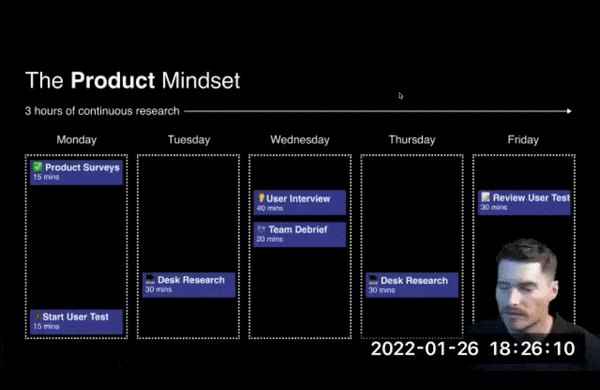5 Ways to Make UX Research Agile
How to lead your team to a continuous mindset with user research
Reading time: 10 minutes
There are several constraints that can make traditional UX research slow and laborious. All too often it is:
Project-based (difficult to change the goal posts)
Bureaucratic (with not enough time dedicated to actually listening to users)
Siloed (different team members stashing their own data making collaboration difficult)
Report-based (which often are too long and too fluffy)
Hierarchical (only designated UX researchers can actually gather data)
The word ‘agile’ is often used in the UX world. It’s become a buzzword of sorts that companies use as a sort of mantra for success. But applying agile processes to UX research can be tricky, considering the trappings above.
On the flip side, continuous research can be implemented immediately. It also is open-ended by nature. Rather than looking for answers to preconceived questions, we can conduct generative studies in real-time where users reveal their hidden pains, needs, and desires, helping to uncover opportunities to innovate that traditional project-based research might miss.
In continuous user research, the users are in charge. We can finally escape our ivory tower and routinely immerse ourselves in the real world rather than being cloistered away reading long, dated research reports.
So, it’s the question on everybody’s lips - how can UX research be agile? The answer is quite simple - by introducing continuous research methods and following these steps to get started:
How can UX research be agile?
Start with the Keystone Habit: Weekly Customer Interviews
The concept of a keystone habit was introduced by Charles Duhigg in his book The Power of Habit: Why We Do What We Do in Life and Business. Duhigg argues that there are certain habits that, once introduced, encourage the addition of other good habits.
An example might be starting the day with 20 minutes of light exercise. It sets a healthy precedent of energy, focus, and optimism and in turn, encourages other healthy habits.
When it comes to continuous UX research, Teresa Torres argues in her book ‘Continuous Discovery Habits’ that when product teams start performing weekly customer interviews, they also start to engage in more experimentation and rapid prototyping as a result.
So why not just dive in and start with one customer interview a week, and take it from there?
2. Use the Pomodoro Technique
Break your UX research operations down into bitesize chunks with the pomodoro technique, a time management method developed by Francesco Cirillio in the 1980s.
Here’s how to do it:
Set your timer for 25 minutes
Begin your research
End work when the timer rings and take a 5-minute break.
If you have finished fewer than three pomodoros, go back to Step 2 and repeat until you go through all three pomodoros.
After three pomodoros are done, take the fourth pomodoro and then take a long break (typically 20 to 30 minutes). Once the long break is finished, return to step 2.
3. Atomic Research
Performing user research on a weekly basis means you will suddenly have an influx of data from multiple users.
This mass of disordered qualitative data can be difficult to manage (and organise)… Enter stage right Tomer Sharon’s ‘Atomic Research’ approach.
This method effectively breaks down research findings into its constituents - searchable nuggets, each of which contains observation and some supporting evidence.
The Four Elements of Atomic Research:
Experiments - where we discovered
Facts - what we discovered
Insights - why we interpret it like this
Opportunities - how we will progress
By organising our user research data like this in a repository, it suddenly becomes more powerful and accessible for the whole team.
4. It’s a Family Affair: Democratize Research
The agile crew has been shouting it for years, but it’s about time everybody got the chance to perform user research.
What about the customer support team? They have unique perspectives and often are the ones that interact with customers most frequently. Maybe they have a special flavour to impart themselves and will interpret insights differently?
UX research can be agile when we loosen up in our roles and realise that customer interviews are not a ceremonial event that only those with the secret sauce can perform.
You can be the game changer and take the lead in empowering your team to make research a priority:
Educate your team on continuous UX research practices
Bridge the gap between users and your team by sharing recruitment techniques
Share a reading list of relevant authors (special mentions to Jeff Gothelf, Teresa Torres, and Tomer Sharon
Establish the use of centralised research calendar tools like Calendly
5. Know the Difference between Analysis and Synthesis
It’s important to distinguish these concepts as if we are to work agile we need to employ a linear, systematic process to form solutions rather than an entangled mess of the two.
The analysis is quite simply the breaking down of larger ideas into smaller ones, in order to aid understanding. Indeed, the word’s meaning originates in Greek, ‘analuein’, which roughly translates to ‘unloosen’.
This could be looking through your notes from customer interviews at the end of the week and adding/removing bits to ensure they are accurate. Crucially, you are seeking to figure out what happened, rather than discovering new insights.
Synthesis, on the other hand, is derived from the Greek word ‘suntithenai’, which roughly translates as ‘put together.’
This could be the act of comparing one interview transcript with another in order to discover a broad theme between the two.
Conclusion
This article only scratches the surface of how UX research can be agile. Implementing continuous UX research does require a paradigm shift, but start small and iterate from one weekly research activity.
Ensuring the whole team uses the same centralised repository (try Notion or Confluence) from the start also makes sense, as does making an effort to automate the recruitment process as much as possible (try embedding a Calendly link into some customer touchpoints).
Get a Masterclass in Agile UX Research
Watch this 60-minute webinar and learn how to do weekly research with your team.




